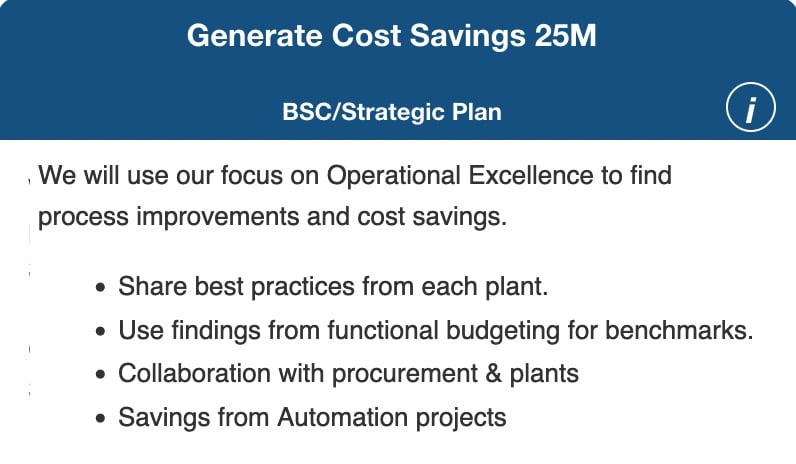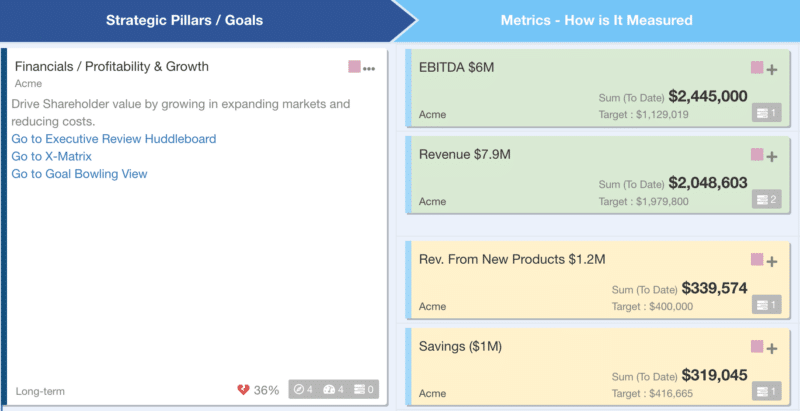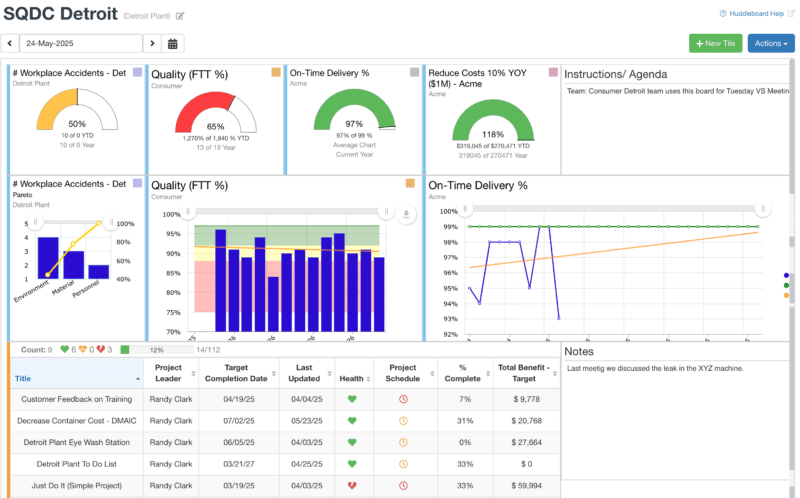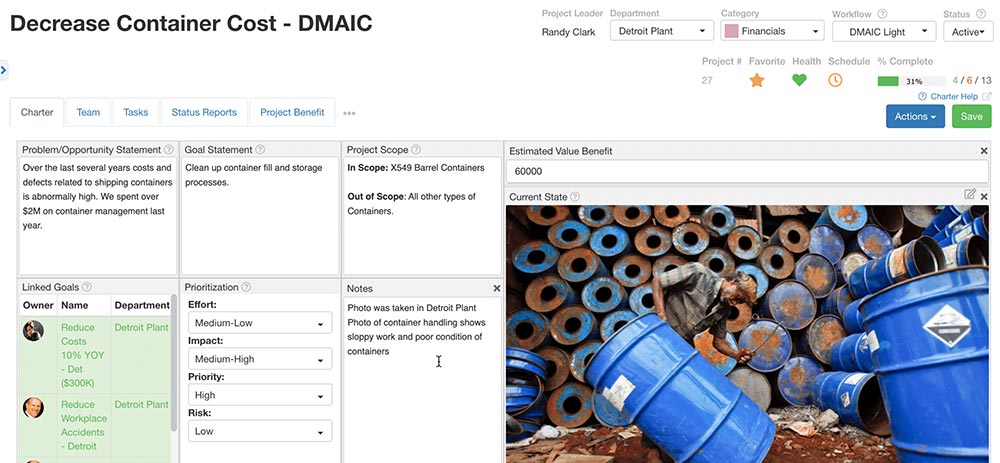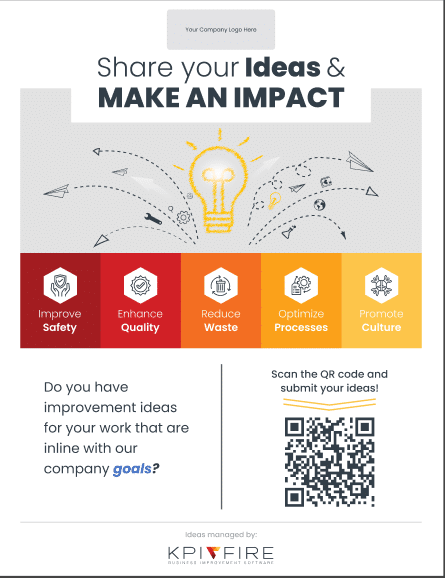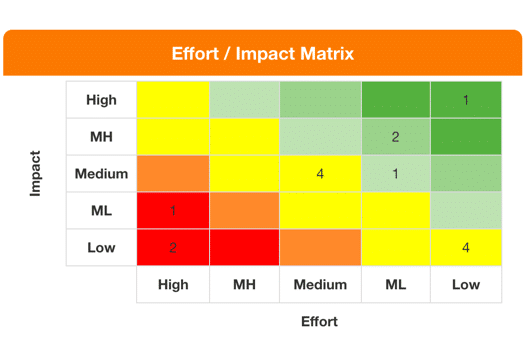How KPI Fire Works
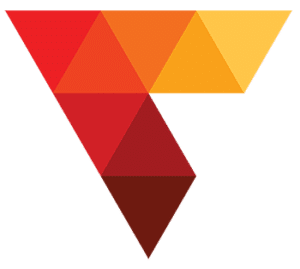
KPI Fire is a Continuous Improvement System
Align Strategy | Drive Execution | Engage People
Here’s how KPI Fire works for your organization…
A Simple Overview

Step 1: Leaders Set Direction
- Senior leaders identify the most important strategic goals or initiatives for the company or for each department within KPI Fire software.
- Teams that know the goal can achieve it.
- KPI Fire can be used for a single strategic goal such as measuring Cost Savings on Continuous Improvement projects, or for multiple portfolios of Strategic Goals.
The Most Common Goals Managed with KPI Fire Include:
- Cost Optimization Goals: These goals include Cost Savings, Asset Optimization, and Productivity Improvement goals.
- Growth Goals: Goals including growing revenue, growing profit, or growing cashflow.
- Capital Allocation Goals: Including mergers, acquisitions and other capital projects.
- Innovation Goals: Including Research & Development initiatives, Ai initiatives, Developing new Revenue.
- Sustainability Goals: including reducing Environmental impact, Carbon reduction, water reduction, etc)
- Culture/People Goals: Including goals designed to improve worker satisfaction, skill, or participation.
- Legal/Regulatory Goals: Including goals designed to maintain compliance with laws and regulations.
- Safety/Risk: Including goals to improve safety or reduce risk.
Step 3: Schedule Regular Business Reviews
- Continuous Improvement requires regular measurement and review. Business Reviews are conducted on regular intervals appropriate for the department level.
- Use Huddleboards to keep your Goals, Metrics, Projects, ideas, and action items front and center during regular business reviews.
- Business reviews include: Daily Huddles, Weekly Value Stream Meetings, Tier Meetings, Stand-ups, MBRs, and QBRs.
Most Common Business Review Meeting Cadences:
- Daily Management System for Daily Huddles
- Weekly: for Value Stream or department alignment meetings
- Monthly: for business unit performance
- Quarterly: for strategic alignment of departments or business units
- Annual: for major strategy alignment
KPI Fire supports these and other business meeting review cadences.
Structured Problem Solving
Even the most excellent companies have problems. Your job is to solve them faster and more efficiently than last time, or more quickly than competitors. And, to prevent the same problems from happening over & over.
- Features: Project & Portfolios, Project Charters, Stage Gates, Tasks/subtasks, Root Cause
- Specialized tools for Root Cause analysis, Statistical Quality Control, tracking project impact and financial benefit, and project report outs.
- Prevent duplicate efforts with Best Practices routing and reports.
- Includes common workflow templates (DMAIC, Kaizen, PDCA, and more. )
Give Your Team a Voice
- Regular research shows that engaged employees are more productive, deliver better customer experiences, are safer, and have longer employment tenure.
- Allow your employees closest to the work to share their ideas for process improvement with the KPI Fire Idea Funnel. (See it in Action)
Features: Internal or External idea submit, custom form fields, poster templates with QR codes, mobile app, link ideas to goals.
KPI Fire Idea Funnel
- Some people call it a “Project Hopper” we call it an “Idea Funnel”. It is a place to organize and prioritize improvement ideas based on Effort, Impact, Risk, and Priority. Not every idea can (or should) move forward immediately.
- The Idea Funnel is a way to show employees that their ideas are captured and considered, but may be waiting behind other ideas that have a higher impact, or lower effort.
The Business Case for KPI Fire
KPI Fire has helped customers generate and report:
- Over $1.4B in Hard Cost Savings
- Over 7000 projects designed to improve Quality
- Over 62,000 improvement ideas captured
- Over 256 improvement projects targeting improvements in Customer Satisfaction.
- Over 13,000 activated projects
- Over 6,000 completed projects including greenbelt, dmaic, and PDCA workflows.
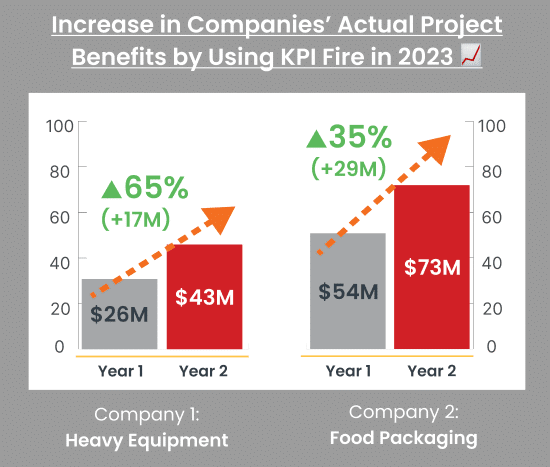
Customers say how KPI Fire impacted their company:
- Director of Continuous Improvement: “KPI Fire saves us over 50 hours per month in reporting time. Estimated annual value of time savings: $48,000”
- VP of Continuous Improvement: “I was able to provide reporting for over $26Million in improvement project savings to our Board of Directors. Our company was considering cutting our CI program before I shared this report from KPI Fire.”
- Chief Financial Officer: “KPI Fire enables our company to do strategic and operational projects better than alternative tools”.
- Business Unit General Manager: “We are using KPI Fire in our monthly business reviews and many functional teams have huddleboards for their weekly and daily tier meetings.”
- Lean Coach: “I am able to more effectively coach green belt projects in multiple locations with KPI Fire.”
- Quality Supervisor and Green Belt Candidate: “I received a promotion and pay increase due in part to the green belt project I worked on in KPI Fire”.
- Business Process Manager: “We have been very happy with the pilot we did in 2 locations and are preparing to roll out KPI Fire to 10 more sites later this year.”
- Lean Leader: “Before KPI Fire I was really struggling to get any engagement in process improvement. After implementing the idea funnel I was buried with 75 new ideas. I had to quickly teach others how to implement them. It forced me to learn to facilitate improvement projects instead of just running projects on my own.”
- Financial Controller: “I took on a Green Belt project to reduce overtime costs. We implemented a change that focused on improving minimum order accuracy to qualify employees for overtime. We improved order accuracy AND we reduced overtime costs. It was a huge win!”
